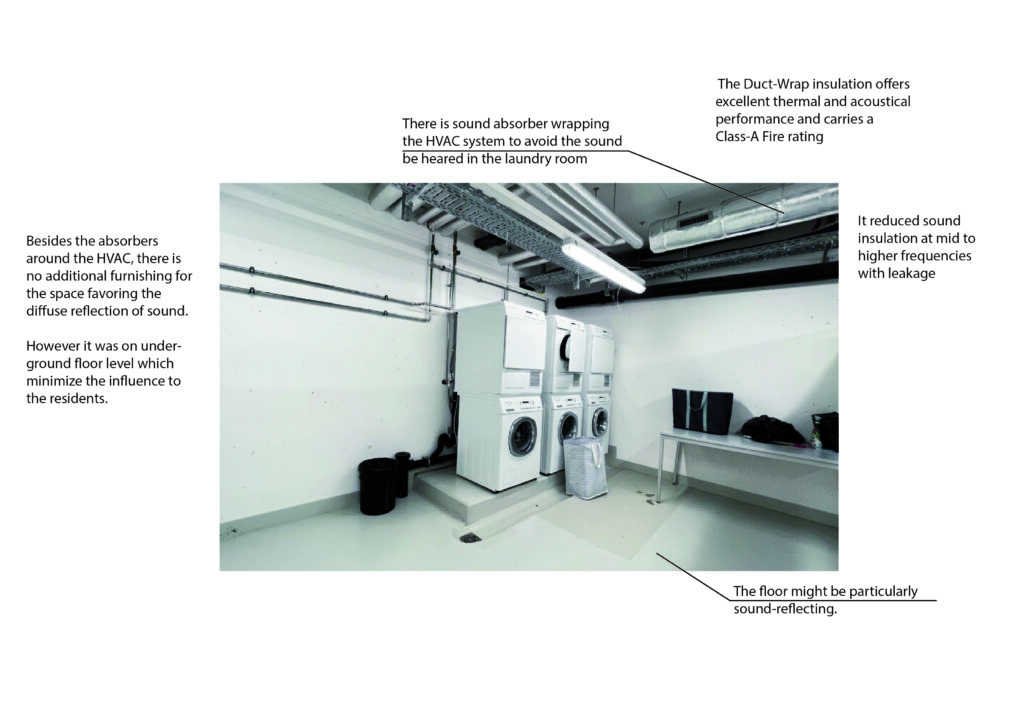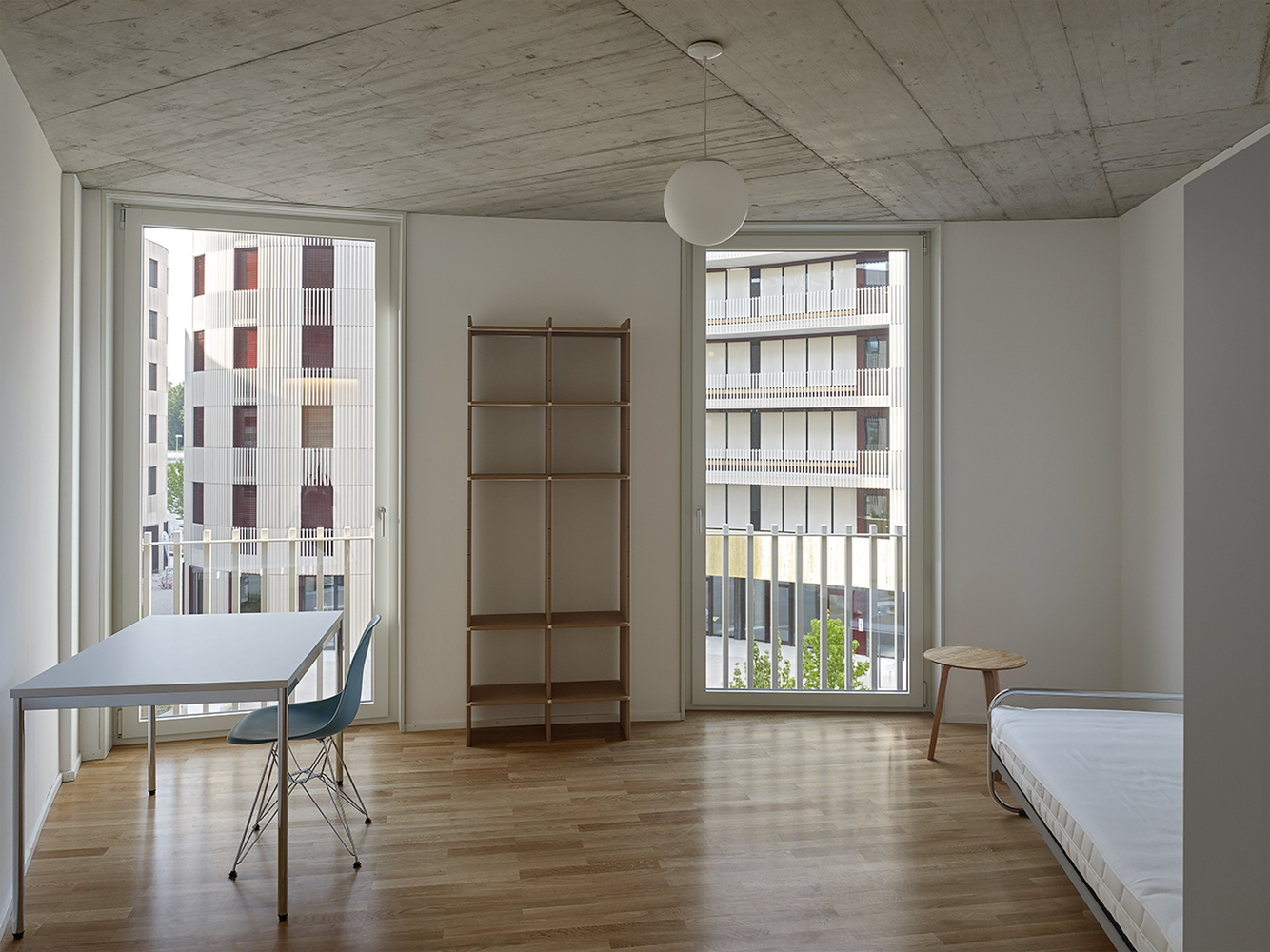from private to public
First Scenarios: Room in Student Village
Function: home for sleeping and working alone.
Noteworthy: Student apartment is usually complained of as acoustically bad, especially when there are parties in the building. There are some factors that make my room stand out acoustically:
- Room Layout: Placing living areas away from bedrooms can help reduce disturbances during study or sleep hours.

- Soundproofing: I could barely hear the outdoor noise if I closed the window. Double-glazed windows can also help reduce noise from outside.
- Flooring Choices: Since there is no soundproofing for the floor. While people were walking in the corridor, I could always hear it.
There are no very obvious ambient sounds. I cannot hear any echo of the sound I made. The room walls absorbed most sound.
Description: A cozy little room in the Student Village
- There are two solid walls with another two walls: one has a door facing to the corridor, the other wall has two double-glazed window facing to the courtyard in the middle.
Acoustic ‘slang’ terminology: Boomy
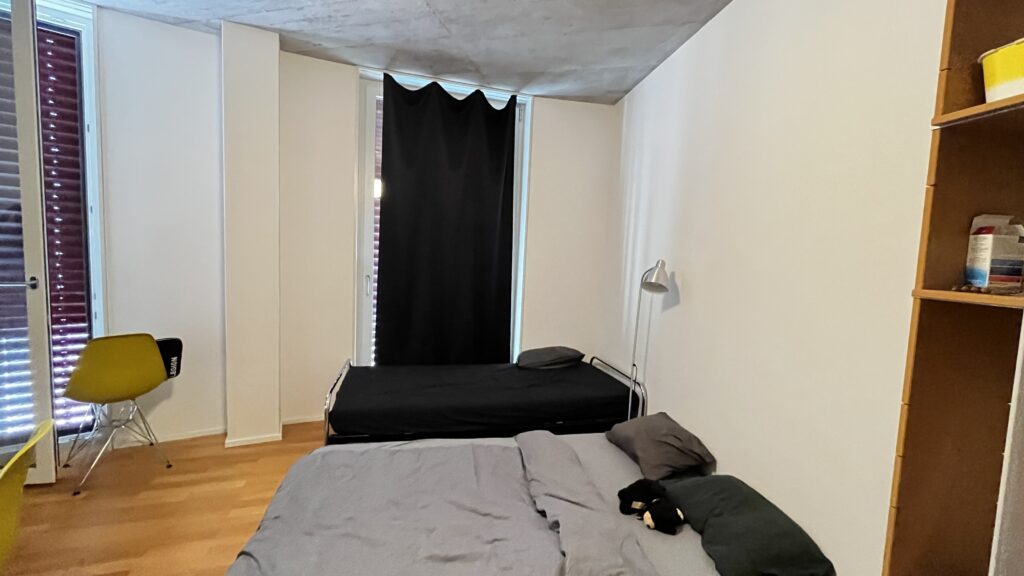
Second Scenarios: HIL Escaping Stairs
Function: Staircase for fire or other escaping, also for daily accessing.
Noteworthy: Escaping staircase halls are typically designed to allow sound to travel efficiently. This means that in the event of an emergency, alarms, announcements, or people calling for help can be heard clearly throughout the space.
- Sound Propagation: We can hear the sound from the top to bottom. The acoustics are optimized for sound to travel with minimal distortion.
- Sound Isolation: There are double doors on each floor to isolate the hall from external noise.
- Less echo: Even the sound travels clear, there is not many echo there.
There is ambient sounds including footstepping. If there is no people there, it was very open and quiet.
- Footsteps: People walking or running.
- Doors Closing: Self-closing fire doors or people manually closing doors behind them.
- Metallic Bangs: Metal doors, gates, or barriers being moved or closed.
Description: It was a verticl structure space. Each floor has two doors on two side of the wall. One face of the wall are toilets. The other side of the wall is a solid door. I hear people moving hurriedly – footsteps echoing on the stairs, and sometimes you catch bits of conversation or shouting.
Acoustic ‘slang’ terminology: Boxy, Live, Reverb

Third Scenarios: Underground laundry room
Function: laundry room.
Noteworthy: The laundry room is at the bottom of the building.
- Vibration Control: Washing machines and dryers can create vibrations as they operate. The door is used for soundproofing.
- Echo and Reverberation? Underground spaces can sometimes have more pronounced echo and reverberation. This room is really having a lot of echo comparing with underground parking. It was a very boxy space, if there is no machine on, we could barely hear any echo. Due to the sound proofing to HVAC, there is very slight HVAC sound coming out as well.
There is ambient sounds including equipment sound of the HVAC. If there is no machin operating, there is slight echo attracted my attention.
- Washing Machine Operation: The washing machines themselves. I heard the mechanical sounds of the washing cycle, including water filling, agitating, and spinning.
- Running Water:Water flowing into washing machines during the filling stage.
- HVAC System: Noise from heating, ventilation, and air conditioning systems in the underground area.
Description: As we walk in, there’s a steady thrum of washing machines and dryers doing their thing. They make this rhythmic noise as clothes tumble and spin. It’s a mix of mechanical sounds and the background noise of laundry day.
Acoustic ‘slang’ terminology: Buzzing, Boxy, Dead
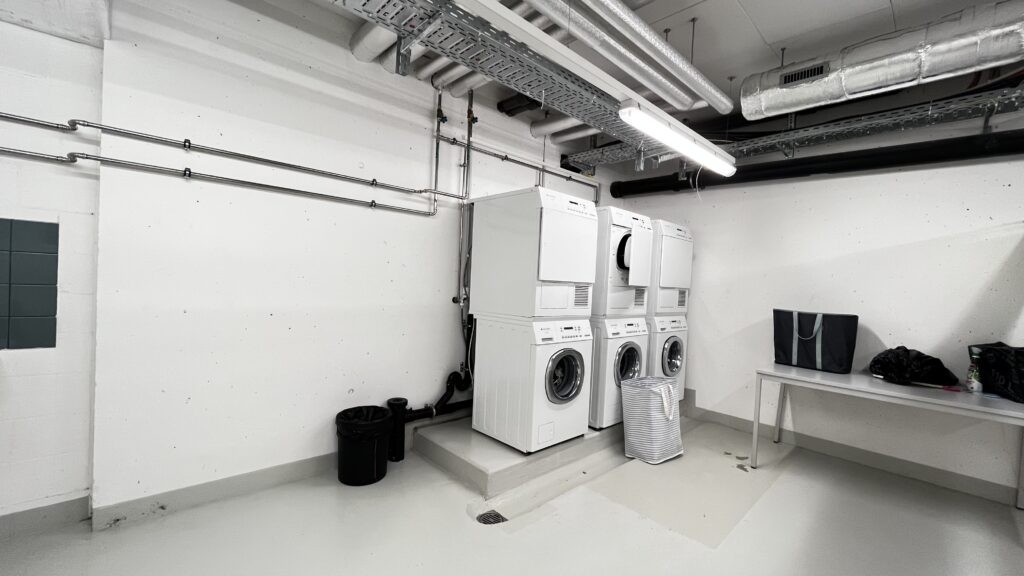
01 Exploring the Emotional Impact of Everyday Sounds
First Scenarios: Room in Studeny Village
Description:
- There are two solid walls with another two walls: one has a door facing to the corridor, the other wall has two double-glazed window facing to the courtyard in the middle.
- If the windows are open, all the sound from the yard could be easily heard.
- If I close the window, I can hear the muffled sounds of friends chatting and laughing from my next-door room sometimes. If there is a party in the courtyard, it will be terrible. I would not describe it as noisy, but ongoing whisper at least.
- When all the openings are closed, I sometimes still heard the occasional clatter of dishes when someone’s doing the dishes after a meal.
Most emergent sounds
- Footsteps: People walking or running.
- Movie Sound: movie screens or speakers
Most catchy sounds
- Laughter: People laughing downstairs if I opened the window.
- Traffic Noise: Cars, trucks, motorcycles, and public transportation.
Most overheard-sounds
- People closed the door;
- the chatting next door or downstairs;
Analysis:
- The sound of the other roommate closed the door: It will easily attract my attention since I know there is people arriving home. I feel like somehow the door of mine room become less thick.
- The chatting downstairs: When I opened the window for ventilation, I could easily hear the conversation downstairs. It made the boxy room open. It depends on if I am working to see if I like the sound.
- A quiet environment can evoke feelings of peace, relaxation, and introspection. Silence allows for focus, concentration, and a sense of personal space.
- However, prolonged silence might lead to feelings of loneliness or isolation.
Sound volume, frequency, and context contributed to your emotional responses:
- A high volume of noise, such as loud music or shouting, can lead to emotions like annoyance, frustration, and stress. It disrupts peace and quiet, making it difficult to focus on tasks or relax.
- Dissonant or disturbing sounds, like a malfunctioning appliance or a sudden loud noise made me annoyed, frustrated, or anxious.
- During social gatherings, the higher sound volumes and the presence of laughter and conversation will help the atmosphere, while it will be really annoying if I am studying.
Second Scenarios: HIL Escaping Stairs
Function: Staircase for fire or other escaping, also for daily accessing.
Description:
- Sound Propagation: We can hear the sound from the top to bottom. The acoustics are optimized for sound to travel with minimal distortion.
- Sound Isolation: There are double doors on each floor to isolate the hall from external noise.
- Less echo: Even the sound travels clear, there is not many echo there.
Most emergent sounds: Footsteps: People walking or running.
Most catchy sounds: Doors Closing: Self-closing fire doors or people manually closing doors behind them.
Most overheard sounds: Metallic Bangs: Metal doors, gates, or barriers being moved or closed.
Analysis:
- Footsteps and Shuffling Sounds: The sound of hurried footsteps and shuffling made me feel urgent and hurried. Hearing these sounds can reinforce the perception that evacuation is necessary.
- In an escaping staircase, echoes and reverberation can amplify sounds, making them seem more intense.
- If there is no sound in the escaping stairs, I will hope to get out of the space as soon as possible.
- If there is sound suddenly appearing in the stairs, I will consider where the sound come from.
Sound volume, frequency, and context contributed to your emotional responses:
- Low-volume sounds, such as footsteps and shuffling, create a sense of urgency and shared purpose without causing panic.
- Continuous sounds, like echoes and reverberations, can add to the overall stress and anxiety.
- While echoes are a natural acoustic phenomenon, in an escaping staircase, they can contribute to the perception of a large space. As soon as there is a door open in one of the floor, this echo will be less than before.
02 Empirical and numerical estimation of
room acoustic properties

Location 1: RT60=(1.05-0.89)*2=0.32 sec
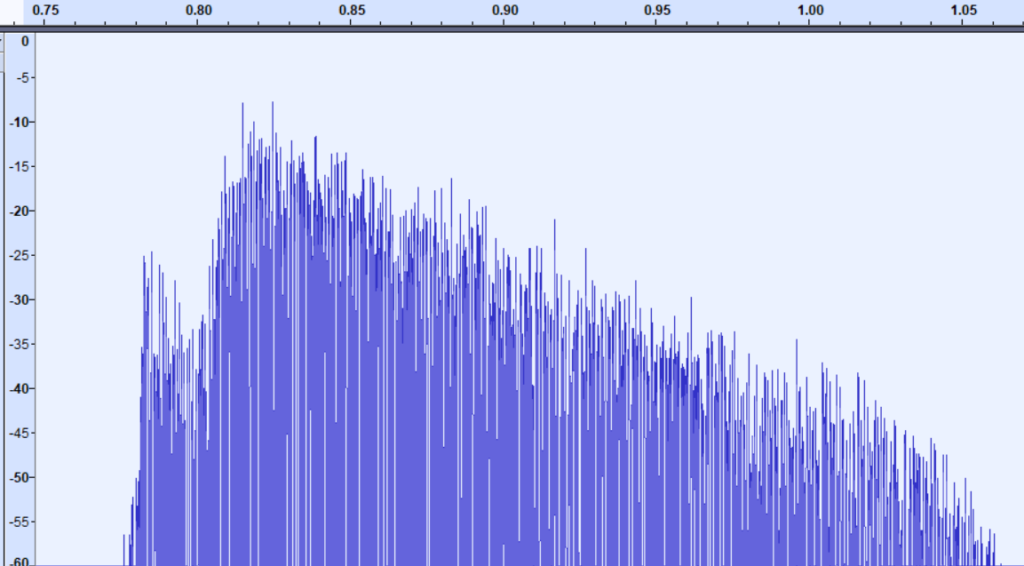
Location 2: RT60=(3.600-3.415)*2=0.37 sec
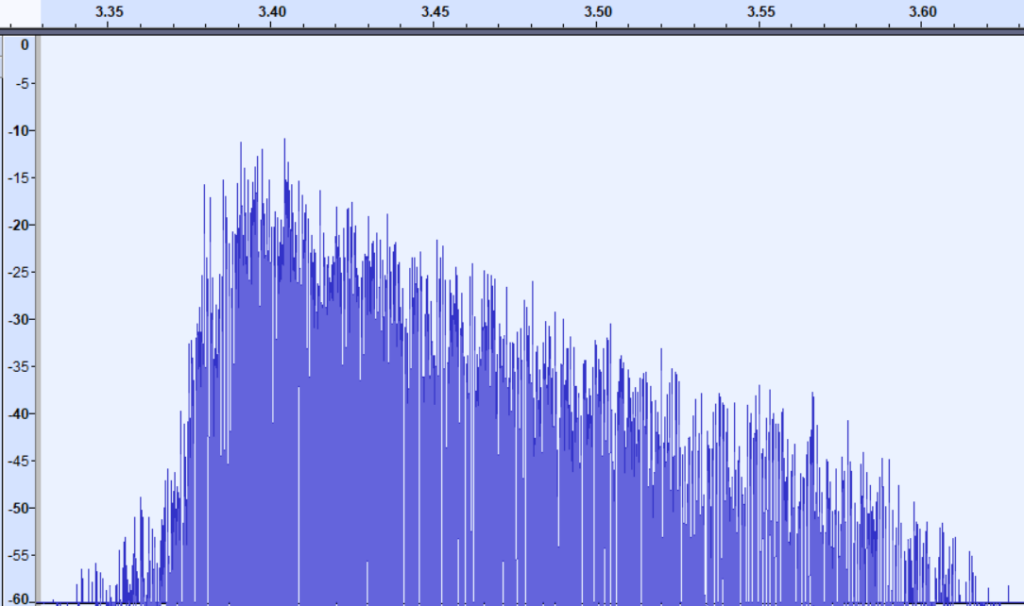
Location 3: RT60=(5.81-5.635))*2=0.35 sec

Location 4: RT60=(8.275-8.095))*2=0.36 sec

There are very short echo based on the diagrams? But I did not hear any.
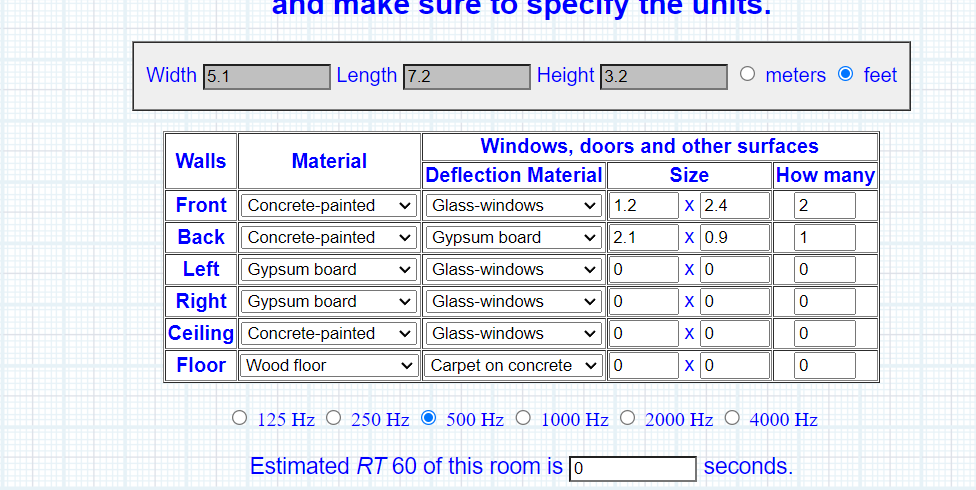
Updated measurement: when I put the computer in different locations

Location 1: RT60=(0.30-0.09)*2=0.42 sec

Location 4: RT60=(1.65-1.41)*2=0.48 sec
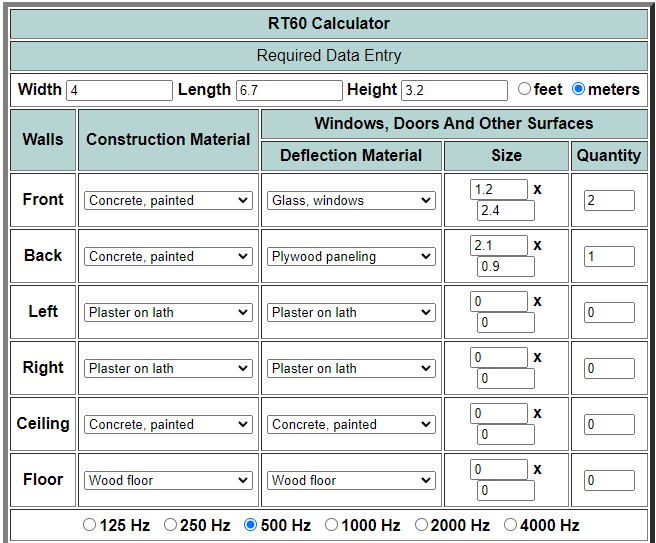
500 HZ:

1000 HZ:

Characterization of room acoustic
treatments

